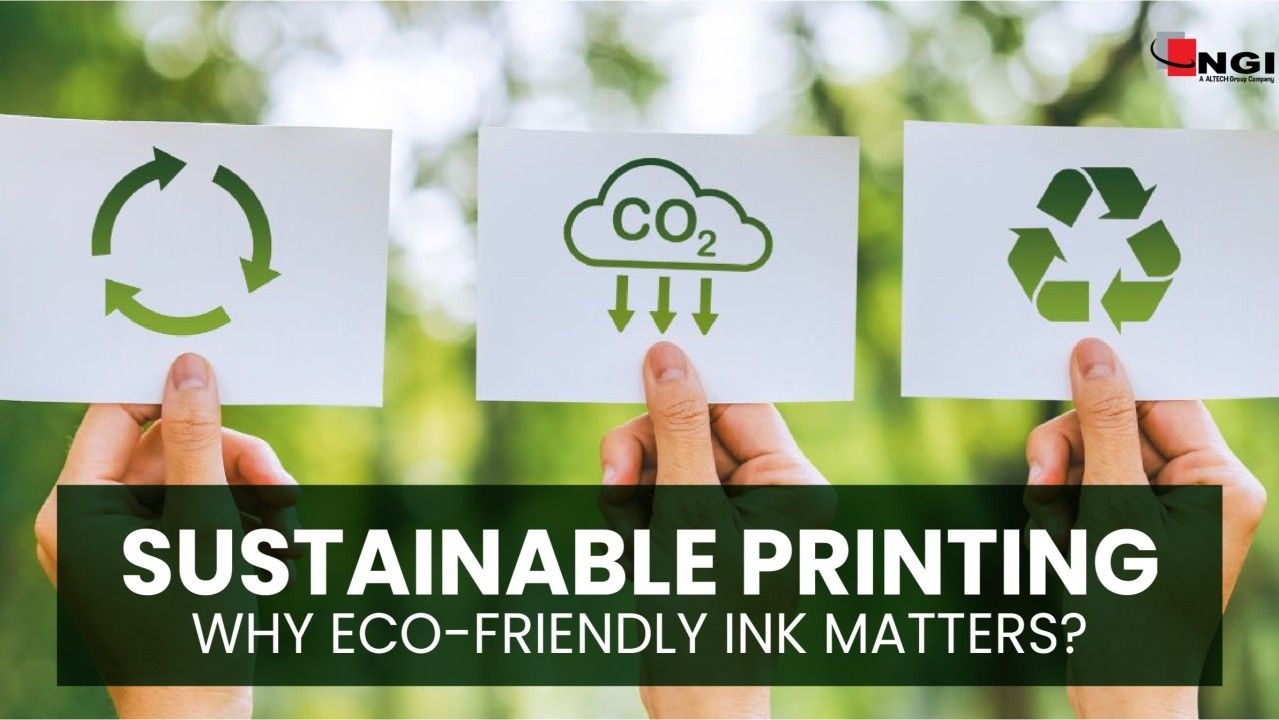Sustainability in Printing
Innovations Leading The Way to a Greener Future
Introduction to Sustainability in Printing
In an era where environmental consciousness permeates industries across the globe, the printing sector is not left behind. The push towards sustainability in printing reflects a broader societal shift towards eco-friendly practices, driven by an increasing awareness of the environmental challenges facing our planet. This movement is not just a trend but a necessary evolution, as consumers and businesses alike demand greener solutions that minimize ecological impact without compromising quality or effectiveness.
Central to this transformation is the development and adoption of innovative materials and techniques that prioritize sustainability. From the use of water-based inks, which minimize volatile organic compound emissions, to the integration of recycled and responsibly sourced paper, the printing industry is reimagining its processes to align with environmentally responsible standards. These advancements are not only reducing the carbon footprint of printing operations but also enhancing the recyclability and biodegradability of printed materials.
Furthermore, the embrace of digital printing technologies has revolutionized how we think about waste reduction and efficiency. By enabling print-on-demand capabilities, digital printing reduces the need for large, unsold print runs, thereby conserving resources. As the industry continues to innovate, sustainability in printing is poised to become a cornerstone of responsible business practices, meeting the demands of eco-conscious consumers and setting a precedent for other sectors to follow.
Understanding FSC Certification in Print Materials
In the realm of sustainable printing, the Forest Stewardship Council (FSC) certification stands as a beacon of environmental responsibility. Established in 1993, the FSC is a non-profit organization dedicated to promoting responsible forest management worldwide. Its certification signifies that the wood products used in printing, including paper, are sourced from forests that are managed sustainably, protecting ecosystems and respecting the rights of Indigenous peoples and forest workers.
FSC certification is crucial for businesses seeking to demonstrate their commitment to sustainability. When consumers see the FSC label on print materials, they are assured that the product supports responsible forestry practices. This certification process involves a stringent set of guidelines that forests must adhere to, including maintaining biodiversity, conserving natural resources, and ensuring that the rights of local communities are acknowledged and honored.
The demand for FSC-certified products has surged as awareness of environmental issues grows. In the printing industry, using FSC-certified paper not only reduces the environmental footprint but also aligns with the values of eco-conscious consumers who are increasingly scrutinizing the sustainability of the products they purchase.
Integrating FSC-certified materials into printing processes provides a competitive edge for businesses, enhancing brand reputation while contributing positively to global environmental goals. As the printing industry evolves, embracing FSC certification is a progressive step towards a greener, more sustainable future.
The Benefits of Using FSC Certified Paper
In the pursuit of sustainability, businesses are increasingly turning to FSC certified paper as a benchmark of environmental responsibility. The Forest Stewardship Council (FSC) certification is a globally recognized standard ensuring that paper products come from responsibly managed forests that provide environmental, social, and economic benefits.
One of the most significant advantages of using FSC certified paper is its contribution to forest conservation. By choosing this option, companies support practices that maintain biodiversity, protect waterways, and respect the rights of Indigenous communities. This commitment not only preserves vital ecosystems but also helps combat deforestation, a major contributor to climate change.
Moreover, FSC certified paper ensures traceability and transparency in the supply chain. This means that every step, from the forest to the final product, is monitored and documented. For businesses, this transparency builds trust with eco-conscious consumers who demand accountability and sustainable practices. Such trust is invaluable in today's market, where brand loyalty is often tied to environmental ethics.
Additionally, utilizing FSC certified paper can enhance a company’s reputation by aligning its operations with global sustainability goals. As more consumers and businesses prioritize eco-friendly products, the use of FSC certified paper signals a company’s dedication to sustainability and its role in fostering a greener future. This not only attracts environmentally aware customers but also differentiates the brand in a competitive marketplace.
In conclusion, adopting FSC certified paper is more than a sustainable choice; it is a strategic one that aligns with broader environmental goals and meets the demands of a conscientious consumer base. As businesses strive to reduce their ecological footprint, FSC certification stands out as a reliable and impactful step towards a sustainable future.
Water Based Inks as a Sustainable Alternative
In the quest for sustainability, the printing industry has witnessed a remarkable shift towards eco-friendly practices. Water-based inks have emerged as a pivotal component in this transformation, offering a sustainable alternative to traditional inks that often contain volatile organic compounds (VOCs) and other harmful substances. These conventional inks pose significant environmental challenges due to their chemical makeup, which can adversely affect air quality and contribute to pollution.
Water-based inks, on the other hand, are formulated to significantly reduce the environmental footprint of printing processes. They achieve this by minimizing the emission of VOCs, making them less hazardous to human health and the environment. Additionally, water-based inks are more easily degradable, thus lessening their impact on natural resources. This eco-friendliness extends beyond the production phase, as materials printed with water-based inks tend to be more compatible with recycling processes, thereby promoting a circular economy.
Moreover, the adoption of water-based inks aligns with the principles of sustainable development by supporting resource conservation. Unlike soy-based or vegetable-based inks, which still require a degree of chemical processing, water-based inks are less taxing on natural resources, making them an exemplary choice for businesses striving to reduce their ecological footprint. By integrating water-based inks into their operations, companies can convey a strong commitment to environmental responsibility, resonating with consumers who prioritize green initiatives.
In summary, water-based inks represent a forward-thinking approach to sustainable printing, reducing harmful emissions and supporting recycling efforts. As businesses seek to enhance their environmental stewardship, these inks offer a practical and impactful solution to meet the growing demand for eco-friendly practices.
Share this blog with someone who may find it interesting.





